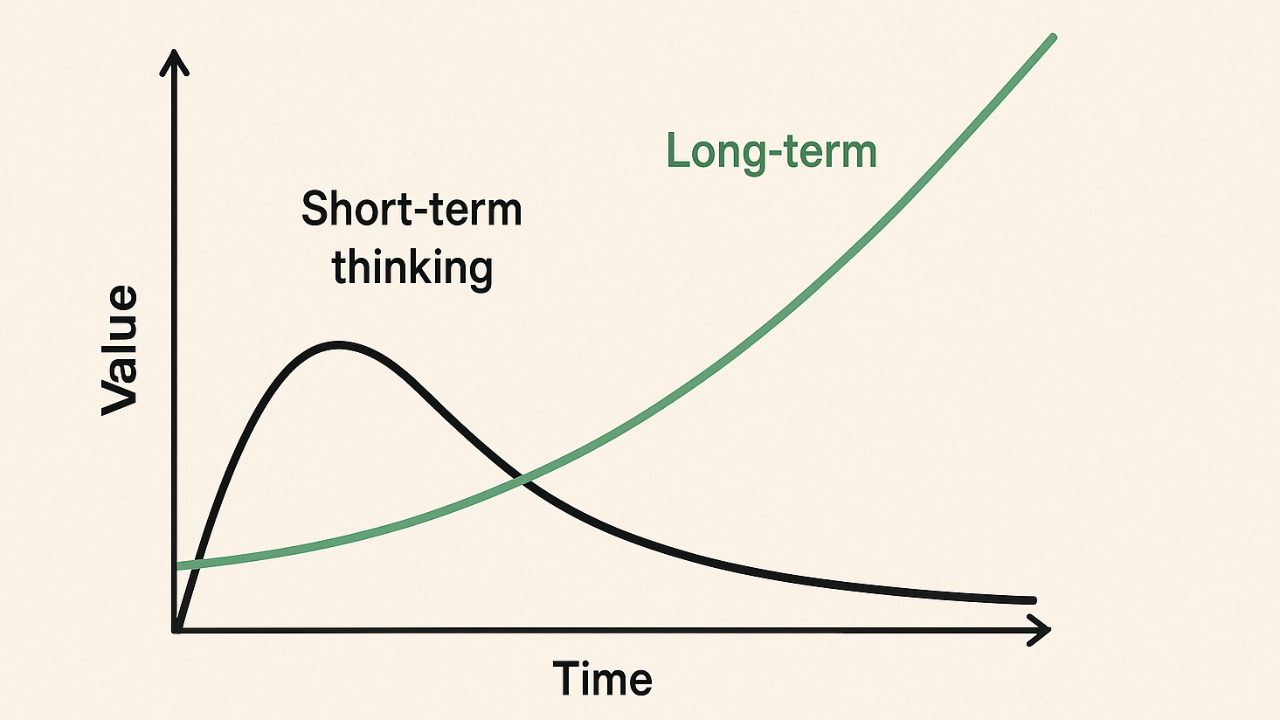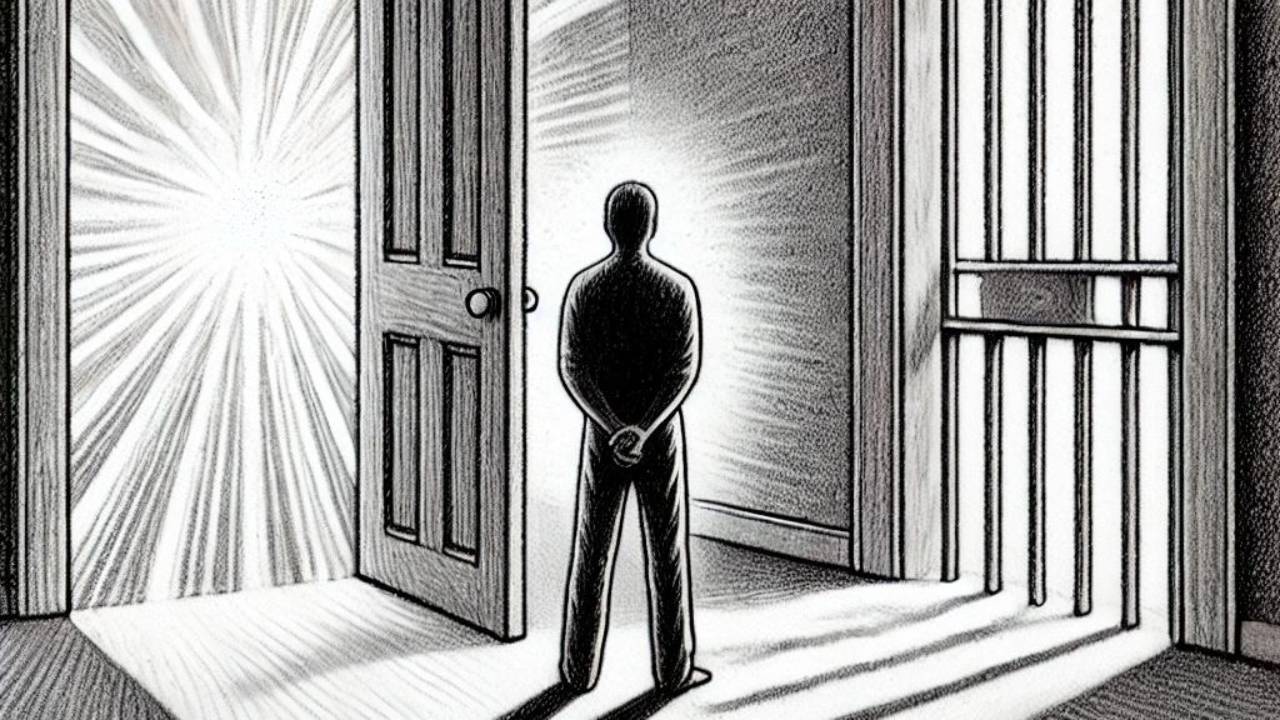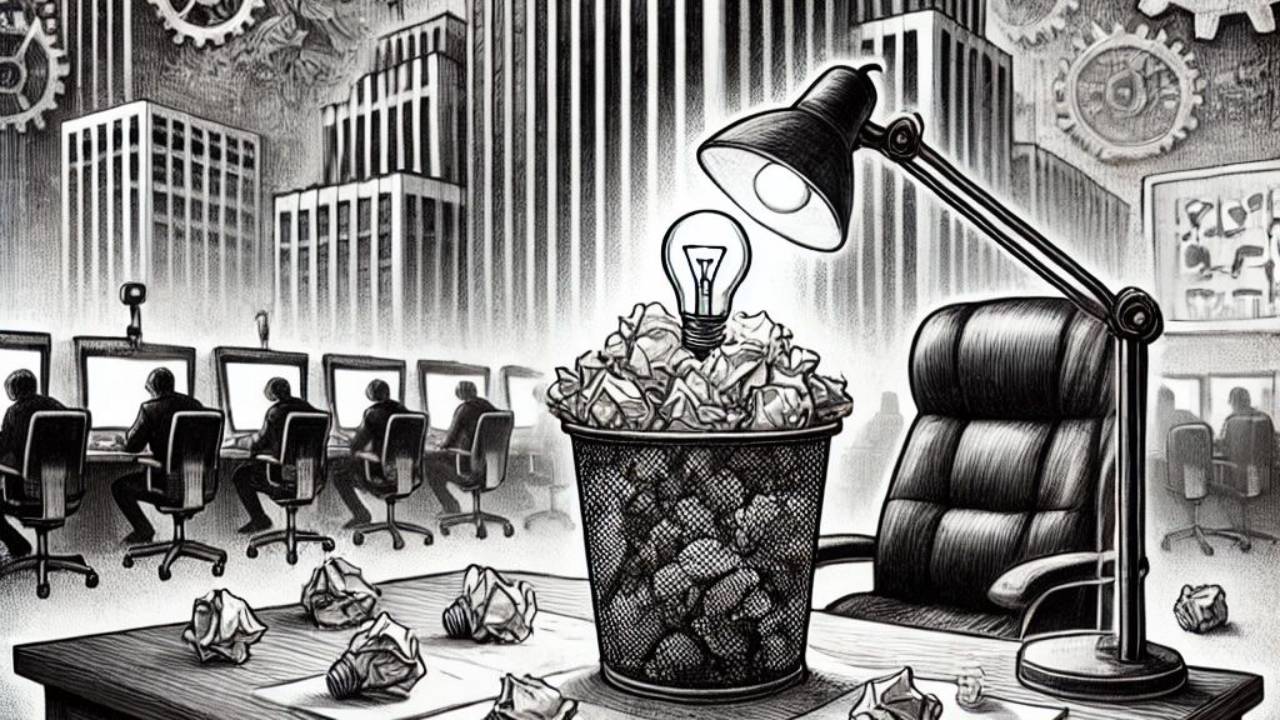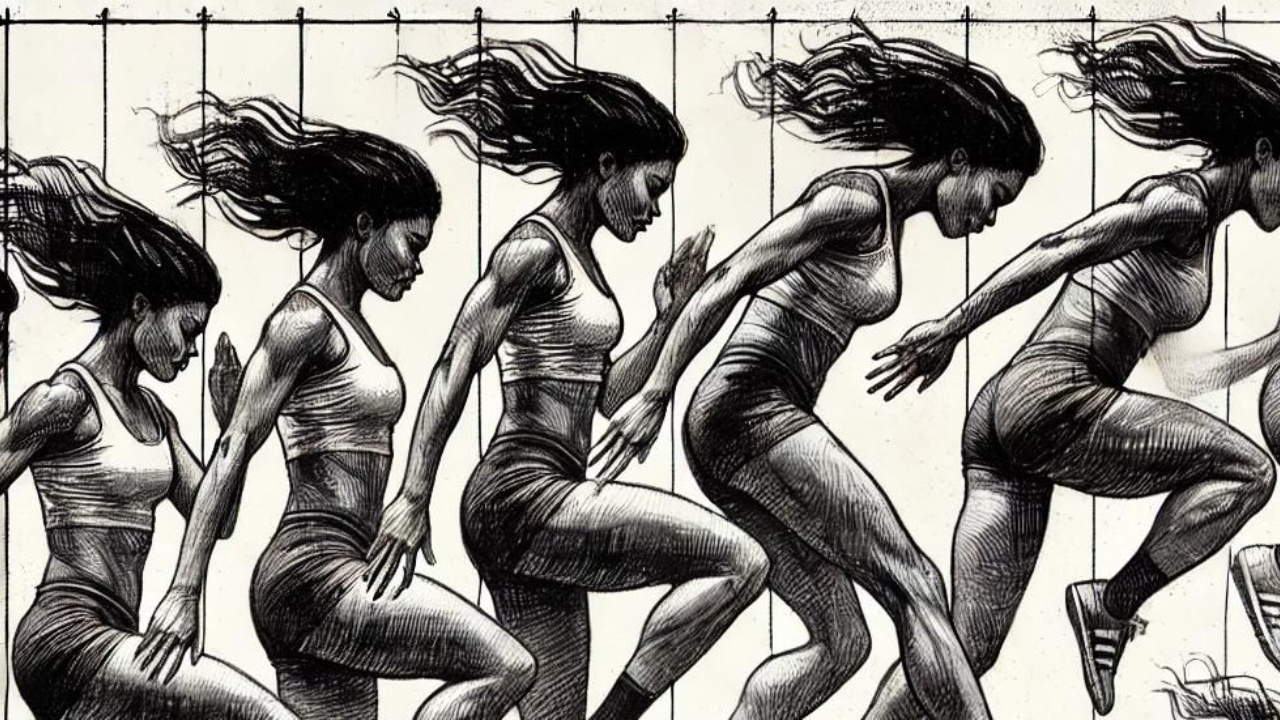Short-term thinking is a trap.
Two Hands
Apr 04, 2025
Keep Reading...
On the one hand, this is awful.
That person’s a jerk.
We got screwed.
We don’t have what we need.
This is hard.
All could be lost.
On the other hand, this is exciting.
That person’s not our problem.
We’ve got a challenge.
We’re going to figure it out.
This is an adventure.
Anything is possible if we bring the best of us.
Both hands are available.
Only one builds something worth holding.
The Most Important Meeting
Apr 03, 2025
Keep Reading...
What’s the most important meeting of the day?
Most of our clients—professional athletes, coaches, high performers—are always in demand.
Their calendars are full.
Their margins are thin.
And their attention is everywhere but inward.
So we work on something unexpected:
A meeting. With themselves.
Even for 15 minutes.
Perhaps a hot drink. A journal.
And a wisdom text—something that centers or challenges.
Not for output.
Not for optics.
But for perspective.
Because when they don’t make space to think their own t...
Don’t Be So Sure
Apr 02, 2025
Keep Reading...
The fastest way to feel smart is to decide who’s not.
Label. Dismiss. Move on.
He’s lazy.
She’s entitled.
They’re arrogant.
Karen.
Woke.
MAGA.
Liberal.
Uneducated.
Out of touch.
Sorted. Boxed. Gone.
Why do we do this?
Kierkegaard said, “You label me so you can negate me.”
Also…It saves us time. Nuance takes effort. Curiosity requires humility.
The fallacy in it all?
What we label, we stop learning from.
What we dismiss, we can’t understand.
What we reduce, we never fully see.
If your job is to grow—y...
Play The Long Game
Apr 01, 2025
Keep Reading...
It values what we can measure quickly over what matters deeply.
When we judge our investments by their 90-day returns, we're selecting for the ordinary, the incremental, the safe bet.
Transformation doesn't live on that timeline.
The early-morning lift feels like a waste—until you’re the one still strong in the fourth quarter.
The career move makes no sense until it positions you for an opportunity nobody else saw.
The product laun...
Moxie: The Four-Minute Myth
Mar 31, 2025
Keep Reading...
Limits feel real—right up until someone proves they aren’t.
Take the four-minute mile.
For decades, it was considered impossible.
Physiologically unsafe.
A boundary too bold for the human body.
Experts said the human heart and lungs couldn’t sustain the effort needed for that speed.
They said the strain on muscles and joints could lead to breakdown or injury.
That it was at the very edge of human capability—if not beyond it.
But Roger Bannister didn’t buy it.
Bannister wasn’t paid.
He trained d...
Find Your Reason
Mar 28, 2025
Keep Reading...
The world tells us what to do. But it doesn’t tell us why.
Day after day, we get stuck in the grind—meetings, deadlines, reports, training. It’s easy to forget what really matters.
And as the world gets louder, our voice gets lost.
Sadly, no one’s checking to see if we've defined our purpose, our values, our path.
Yet, these are the very compass we need to navigate the noise.
Without them, we're not just drifting—we're wasting time.
---
Here're a few prompts to help you reconnect with yours...
The 5 Paths to Credible Self-Talk
Mar 27, 2025
Keep Reading...
The most powerful voice in your life is the one in your head.
It shapes how you show up—or don’t.
It critiques. It hesitates. It keeps you small.
And it sounds convincing—because it’s well-rehearsed.
But that voice can be replaced.
Not with hype. Not with noise.
With something stronger.
Credible self-talk is a trained voice you trust under pressure.
Here’s how to build it...
1. Find a Reason
A voice without purpose is easy to knock off course.
But when you know what matters and where ...
Fire The Critic; Hire The Coach
Mar 25, 2025
Keep Reading...
You talk to yourself all day long.
Not once or twice. Not occasionally. Constantly.
In fact, researchers estimate your brain runs through thousands of thoughts a day—some up to tens of thousands. Not all are conscious. Not all are helpful. But almost all are automatic.
And while your mouth might speak 150 words a minute, your mind? It flies.
Inner dialogue can race through thousands of mental “words” every minute—judgments, doubts, plans, predictions. Like a nonstop broadcast running just ben...
Moxie: Alex Honnold & The Voice On The Wall
Mar 24, 2025
Keep Reading...
One StoryClimber Tommy Caldwell called it, "The moon landing of climbing." The New York Times described it as, "One of the greatest athletic feats of any kind, ever." Maybe you've seen the documentary. Maybe you haven't. No matter, it's all worth a second look. On June 3, 2017, Alex Honnold did the impossible when he climbed the iconic 3,000-foot granite wall of El Capitan in Yosemite National Park—without a rope. Just Alex. And the voice in his head. At first ... |
The Truth Hurts—Then It Frees You
Mar 21, 2025
Keep Reading...
Just because we want something to be true doesn’t make it so.
Too many of us are holding on.
To an outcome we expected.
To a system that used to work.
To the belief that if management just got it, if the coach just saw us, if the market just settled down, things would be different.
At some point, we have to stop.
Stop arguing with reality.
Stop defending the past.
Stop waiting for someone else to fix it.
The truth is, isolation basketball ruled—until ball movement won championships.
Sears ...
Fear Isn't The Problem
Mar 20, 2025
Keep Reading...
Fear isn’t the problem.
It’s the moment after.
The hesitation. The second-guessing. The debate in your head.
You see the flaw in the plan but stay quiet—what if you're wrong? The final shot is yours, but you freeze—what if you miss? The idea sits in your head, full of promise, but you stall—what if they don’t like it?
Fear is universal. We all feel it. But what happens next? That’s the difference.
That split second—where you either step forward or step back. Where you take the leap or let f...
The Problem with Motivation
Mar 19, 2025
Keep Reading...
You see something others don’t.
A vision. An idea. A way to serve the people around you.
It lives in you—and only you.
But no one is asking you to bring it to life. No one is knocking on your door, insisting you build, create, or share what only you can see.
So you wait.
You wait to feel inspired, to be pulled forward by some external force. You assume motivation comes before action.
But that’s not how it works.
The Fuel Doesn’t Kick In Until the Engine’s Running
Think about it.
The fir...
The Problem with “Engaged” Employees
Mar 18, 2025
Keep Reading...
Leadership loves engagement. Up to a point.
They’ll hold town halls, send surveys, build “open-door” cultures. They’ll tell you they value your input. But only within the lines. Within the system. Within the plan.
Because engagement—real engagement—is dangerous. It leads to ideas. And ideas, by definition, challenge the status quo.
And that’s a problem.
Not for you. But for them.
See, leadership's job isn’t to create a better future. It’s to protect the systems they’ve already built. To mai...
Moxie: You Already Know What You Need To Do
Mar 17, 2025
Keep Reading...
One Story
A Company Built by Following Your Values
Yvon Chouinard never set out to build a company. He just needed better gear.
In the 1950s, Chouinard taught himself blacksmithing and started forging his own climbing pitons—metal spikes climbers hammer into rock faces for support. The ones on the market weren’t strong enough for the kind of climbing he wanted to do.
So he made his own. By hand. Tested them himself. And when his climbing partners saw what he was using, they wanted some too.
...
Culture Decides What Gets Noticed
Mar 14, 2025
Keep Reading...
A $3.5 million violin. A world-class musician. And no one stops to listen.
Joshua Bell, one of the greatest violinists alive, stands in a Washington, D.C. subway station, playing for an hour. Thousands walk past. Few stop. Even fewer notice.
Not because the music isn’t brilliant—but because the setting makes it invisible.
It turns out, if your best work gets lost in the noise, it changes nothing.
Culture works the same way.
People don’t respond to what you claim is important. They respond t...
Culture and Bad Ideas
Mar 13, 2025
Keep Reading...
Think about writer’s block. Someone says, “I don’t have any good ideas.” The best response? “Okay, but do you hav...
Clarity Over Harmony
Mar 12, 2025
Keep Reading...
Culture isn’t a vibe. It’s not a feeling. It’s not a general sense of “we like it here.”
That’s fine if all you want is a pleasant place to work. A team that gets along.
But if you’re building something that matters—something that lasts—culture isn’t about harmony. It’s about clarity.
The best cultures aren’t the ones where everyone agrees all the time. They’re the ones where everyone knows where they stand.
What’s expected. What matters. Where the lines are.
Clarity beats harmony. Because ...
Culture Isn’t What You Say—It’s What You Reward
Mar 11, 2025
Keep Reading...
Culture was never a slogan.
It’s not a mission statement or a set of values listed on a website. It’s not what gets talked about in pregame speeches or hung on the walls of the locker room.
Culture is what actually happens.
It’s the stories that get celebrated. The behaviors that get praised. The standards that get upheld—not because a coach enforces them, but because the team owns them.
Culture is the shared understanding of “this is how we do it here.”
And here’s the thing—this kind of cu...
Act First. Culture Follows.
Mar 10, 2025
Keep Reading...
Most people think culture is something you talk about.
A slogan. A speech. A framed list of values on the wall.
But culture isn’t what you say. It’s what you do.
And most people get action backward.
They think motivation comes first. That a team has to feel inspired before they commit. That buy-in has to happen before accountability can.
But that’s not how it works.
The runner doesn’t wait to want to run. She laces up anyway. Three miles in, she’s flying.
The writer sits down uninspired. T...


















